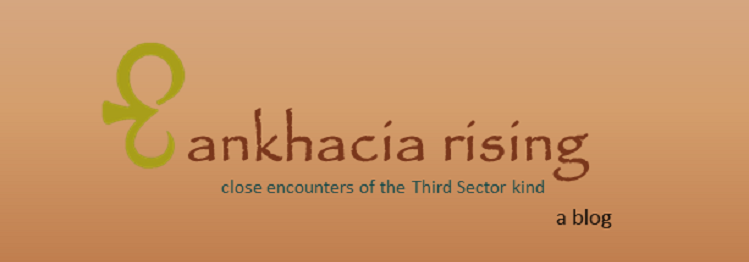Get pledges of allegiance to your NPO with these 3 tips
/I attended an outdoor concert of a local symphony recently and the audience was asked to stand to recognize the pledge of allegiance as it was performed. While I hadn’t expected it, it got me thinking about how often it is a part of so many of the public gatherings we attend.
Be it a school assembly, government forum, or athletic event, practically all those in attendance dutifully rise, place their right hand over their hearts, lift their heads and speak in one voice their devotion to their country.
In what is turning out to be a head-scratching, nail biting U.S. presidential race, declarations by one party or another of their devotion to their country is on full display, just as they question same, one of the other. Beliefs about what that allegiance should look like and how it should be expressed are at the core of what political parties claim differentiates them and helps them attract legions of like-minded ideologues.
They compete for the hearts and minds of the voting populace, touting their particular philosophy and approach as the one that is most effective and appropriate for the trying times we live in.
Come November 8, those convinced of the best-made case will go to the polls and vote their conscience, and their allegiance. They also will be voting for what they believe is in their best interest. After all, that’s what it’s really all about.
For a nonprofit organization seeking to gain the unwavering allegiance of its stakeholders, that’s all that counts as well. Self-interest drives everything we do and expressing our philanthropy is no exception.
That expression is highly personal and steeped in allegiances, traditions and ideologies that as a nonprofit leader you need to know as much about as possible. Finding out what motivates your donors, boardmembers and other stakeholders, and making this a structured part of your donor cultivation, boardmember vetting and employee development process should be a standard practice.
But that may be putting the cart before the horse, especially if your organization hasn’t established and regularly expresses for all to hear and know:
a clear mission and vision,
the values that guide the way it executes its programs, treats its stakeholders and safeguards its legacy, and
its culture of philanthropy
The expression of your vision, mission, values and culture of philanthropy affects the current levels of contribution in time, talent and treasure your organization is experiencing from its stakeholders. As nonprofit leader’s we’ve all done our share of belly-aching about lax board participation, disappointing fundraising outcomes or diminished employee morale. Every organization experiences its own challenges in these areas at one time or another. But if they’re happening all at once or for such a long period of time that it’s threatening your very existence, it’s safe to say that the elephant in the room is tired of waiting to be acknowledged.
Capturing and holding your stakeholders attention, imagination and allegiance is likely not all that different from how a country commands unwavering devotion from its citizens. The objective is to appeal to their nationalistic sensibilities; helping them see themselves as essential to your organization’s success (and by extension their own) as a pledged super-delegate to a political party’s presidential nominee.
Search your own feelings when you hear or recite the Pledge of Allegiance. I’d venture to say that its power to inspire patriotism and ignite passionate devotion in you rests in key areas that when applied to your nonprofit can have just as effective an impact:
Indoctrination through recitation – The Pledge is short, uses action words that conjure visions that connect to a particular feeling, and is easy to say repeatedly and commit to memory. Use this same approach to develop or rework your vision and mission statements so they are easy to recite.
Then make sure it becomes a living, breathing part of everything you do, from opening every board meeting and fundraising event to every closing call on a donor or site visit with a foundation. Everyone you encounter should know why you exist and what you’re about.
Pride by association – People want to be affiliated with success. Your organization’s ability to endure challenges, institute innovative practices that advance its outcomes and perhaps be recognized for its achievements, especially among its peers, sets your stakeholders up as smart, savvy philanthropic investors who belong to an exclusive club.
One way to thank them for hanging in there with you is to make sure you keep them in the communication’s loop via electronic, snail mail or social media, newsletters, videos, webinars —and a plain old phone call every once in a while. Let them know what your organization is working on or has accomplished and how they are helping move the mission forward.
Legacy building—Focusing on how your work has and can endure with the participation of new and varied voices, ensures that the foundation you build today is one that is responsive, expansive and inclusive. New stakeholders who bring different cultural, ethnic, racial, gender and age-specific perspectives can establish your organization as an open and welcoming expression of the ideal its vision should embody.
Capturing and holding your stakeholders allegiance by taking every opportunity to help them see their own reflections in your mission, vision, values and philanthropic culture will make them eager contributors to your organization in every way you need them to. Once you effectively demonstrate they are essential to your existence, their bond, and your organization’s future, is set.
What are some ways your organization is building allegiances with its stakeholders?


